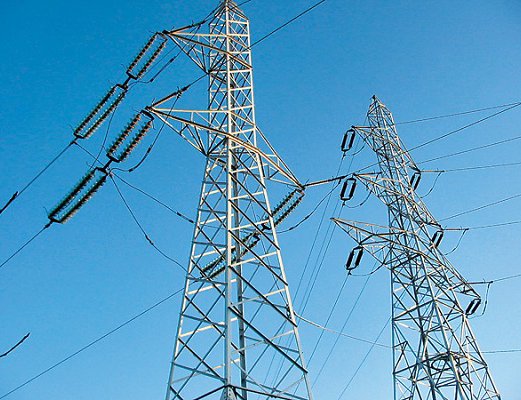
Nepal's hydropower history is over a century old. However, Nepal is yet to able to generate more than 706 MW of power. Some 35 percent people, who are receiving power from the national grid, are facing uncertain hours of power cuts. However, only seven percent of the population gets the power from alternative energy sources, including solar, micro-hydro and others. There is no access to power for the 58 percent of population.
Nepal Electricity Authority is the sole institution responsible for construction, generation, transmission and distribution of power; it is also given the authority to construct the east-west transmission lines. However, the present state of NEA is that it is unable to complete its task. NEA has the monopoly in electricity. It is said that there is less possibility to see the loss in a company having monopoly over the electricity trade. However, in the context of NEA it proves wrong. NEA has monopoly over the transmission line. Due to its service oriented nature, NEA is compelled to sell the electricity for which it pays a much higher price. NEA is now busy to construct 592 MW project, including 456 MW Tamakosi. Due to the political instability and India's apathy, Nepal's power sector has been passing through a critical stage. Although electricity is one of the necessary ingredients for the overall development of the country, the state, government and NEA have rarely shown any interest in the transmission lines. Over the period of 100 years, Nepal has built just 981 kilometers circuit of transmission lines. If Nepal's economy, had a capacity to absorb 11500 MW (peak hour), it would have required 845 KM long 400 KV lines, the total cost for which would have been Rs. 41 billion and for 612 north south 400 kv would require Rs. 33 billion, according to the Twenty Year’s Power Generation Report. If Nepal builds this transmission line, there will be a rush of investors to invest in Nepal. In case, India agrees, even Nepal will be able to export its power to Bangladesh.
NEA is planning to expand its transmission line to 3272 kilometers or circuit. This includes 78 kilometers of 33 kV, 1409 kilometers of 132 kV, 755 km of 200 kV and 1030 kilometer of 400 kv in the coming ten years. The cost of the projects will be 1.27 billion dollars. Out of this, NEA has just 18 percent of the amount. Donor countries, including the Asian Development Bank and the World Bank, have expressed their commitment to arrange necessary funds for the project. It is yet to see how NEA and the government will arrange the funds. NEA estimates that it will require 825 technicians for the project. However, it has just over 84 technical staffs under Grid Development Department. Once Nepal completes the project, Nepal will see a relief from load shedding.
The corridor transmission line projects include Kabeli Damak 132, Kosi corridor (Bashantapur-Kusha) 220 kv, Katari-Okhaldhunga, Solu, Singati-Lamosanghu,Sunkosi-Dolkha,Ramecchap –Garjyan-Khimti, Middle Marsyangdi-Manang, Kaligandaki 220 KV, Katari-Okhaldhunga-Solu, Singati-Lamosanghu, Sunkosi-Dolkha, Ramecchap-Garjyan-Khimit, Middle Marsyangdi-Manang, Karnali Corridor (Lamki-Upper Karnali)132 kv. Under the absorption project are Thanko-Chapagaun-Bhaktapur, 132 kv, Syangja132 substation, Kamane Substation, Kushum-Hapure 132 kv transmission line, Butwal-Kohalpur, Chapali 132, Matatirtha 132 kv station. Similarly, the primary phase of project include Bajhang-Dipayal-Attariya Transmission line, Hapure-Tulsipur Transmission line Surkhet-Dailekh-Jumla Transmission like, Kaligandai-Gulmi (Jhimruk)132 kv Transmission line, Hetauda Butwal 400 KV Transmission line, Butwal-Lamki 400 kv Transmission line and Lamki-Mahendranagar 400 kv Transmission line. Without construction of transmission lines, one cannot expect any private investment and even NEA cannot build any project. For instance, a total project cost includes the road construction and transmission line. The government has no plan to construct the transmission line in the attractive power generation sites like roads. If there are sites with cheap power generation, the government should construct the transmission line. The government has already issued the license to public and private sector with promises for over 17,000 MW. However, there is no transmission line in most of the areas.
Interestingly, NEA is signing PPA with private party without transmission line. Although there is a provision now for the connection agreement following signing PPA, NEA does not show any hesitation to sign the agreement because it does have to pay just 5 percent of compensation in case it fails to construct the transmission line at the time of generation. No sane investor can go to invest money looking at 5 percent compensation for the investment of billion of rupees. The enthusiastic private sector initially took this new provision as a victor. But, they realized later that NEA cheated them.
Currently, all PPA is signed by showing the Project not whether it will be implemented or not. Even some companies signed agreement just to sell the license. For example, NEA has been signing PPA with various companies in Kosi corridor showing the construction of 220 kv Duhabi Transmission line. Interestingly, banks are showing hesitation to sign financial closure with companies having PPA due to uncertainty over the construction of transmission line. It is unfortunate that PPA is signed without transmission line. Although the NEA failed to complete the transmission line even in 10 years but Ministry of Energy has been cancelling the license of generation in five years.
There are so many good examples how private investment is at stakes due to lack of commitment on the construction of transmission line. As the construction of the 10 MW Spring River Hydropower project has completed last year, it failed to evacuate its energy to national grid due to lack of transmission line. The Ministry of Finance, Energy and NEA agreed to complete the construction of the 40 km long 132 kv Singati-Lamosanghu Transmission line by 2008. After nearly three years of delay, it is not under construction. In case of any delay in the construction, the investors will have to go bankrupt, even the investment of private sector is under threat. Similar situation is with other private investors who have already invested money on the assurance that the government will construct the transmission line. NEA has already ruined hundreds of investors. Construction of transmission line is matter of major debate and controversy. Even the government agrees to construct the transmission line; it has to face several hurdles at the implementation stage from the people. For instance, the second circuit of Heatuda Dhalkebar 132 KV Transmission line took a decade to complete. Thankot, Chapagaun and Bhaktapur (132 kv) Transmission line project was canceled due to opposition from people. Land acquisition is one of the major challenges for the construction of transmission lines. The present power crisis is the result of the apathy of government and NEA's incapability to invest money in the Transmission Line. In the last one decade, Nepal has just waited for foreign aid for the transmission lines. Nepal-India Transmission line has another painful story to tell. Whether to import power from India or to export, Nepal needs grid connection with India. With the fund available from the World Bank, Nepal-India agreed to complete the Dhalkebar-Mujafarpur 400 kv transmission line by 2014. However, no progress has been made yet on the project.
The dream to end the immediate load shedding of Nepal by importing electricity through this grid seems to be just a dream. Showing this agreement, India has already secured the license of two economically very much viable projects, Arun III and Upper Karnali. As long as Nepal does not have the grid connection to India, it is impossible to lure private sector in export oriented projects. A similar situation is with the domestic investment.

Bikash Thapa
Thapa is Kathmandu based journalist who regularly writes on water resources and energy sector. He has also written a book "Hydropower in Nepal"
- Irregularities in Hydro
- Aug 24, 2016
- The Hydropower Export Dream
- Feb 23, 2013
- Storage Projects Will Solve Power Problem
- Jan 20, 2013












